


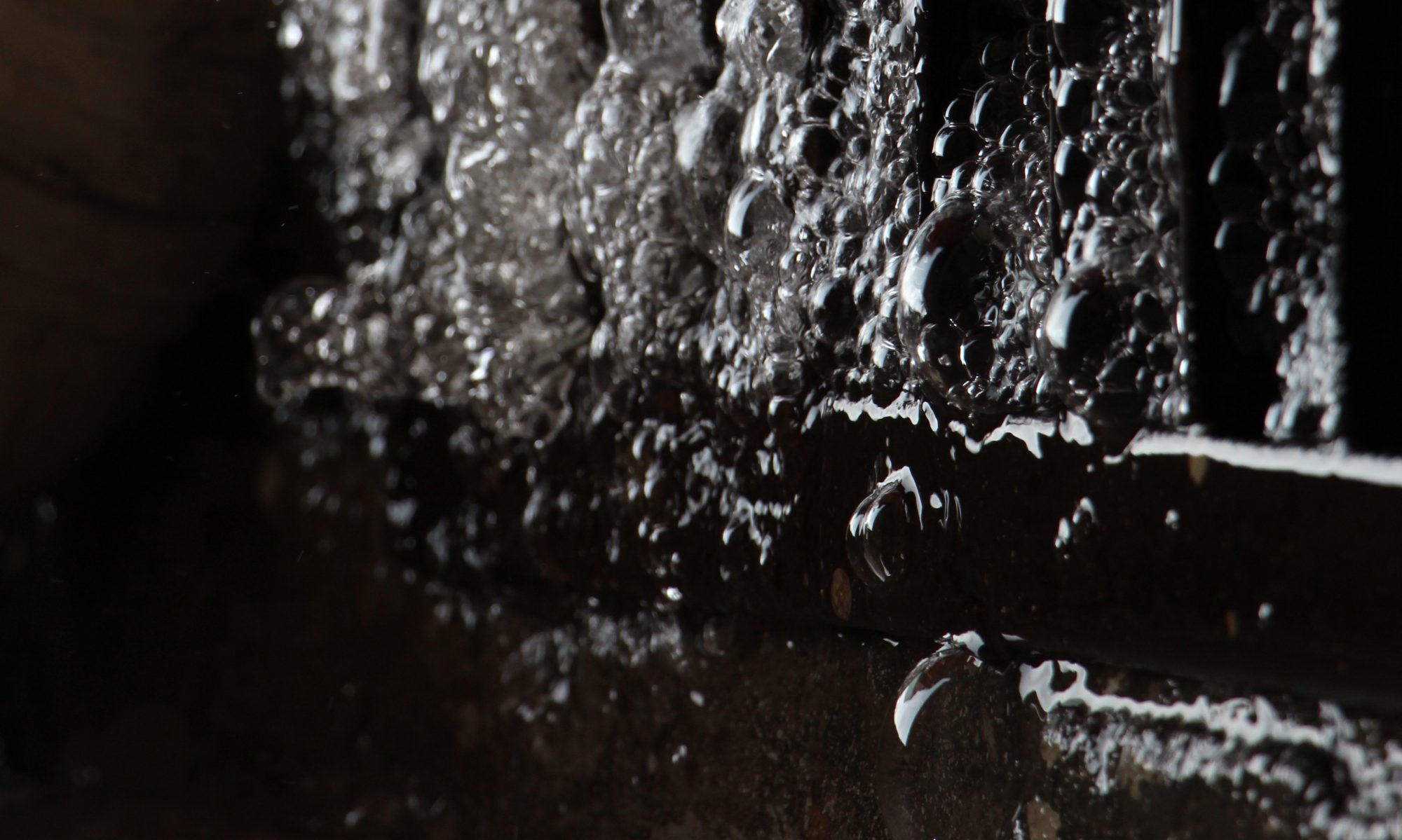
when thoughts distill and drop like rain — somedays heavy, somedays light



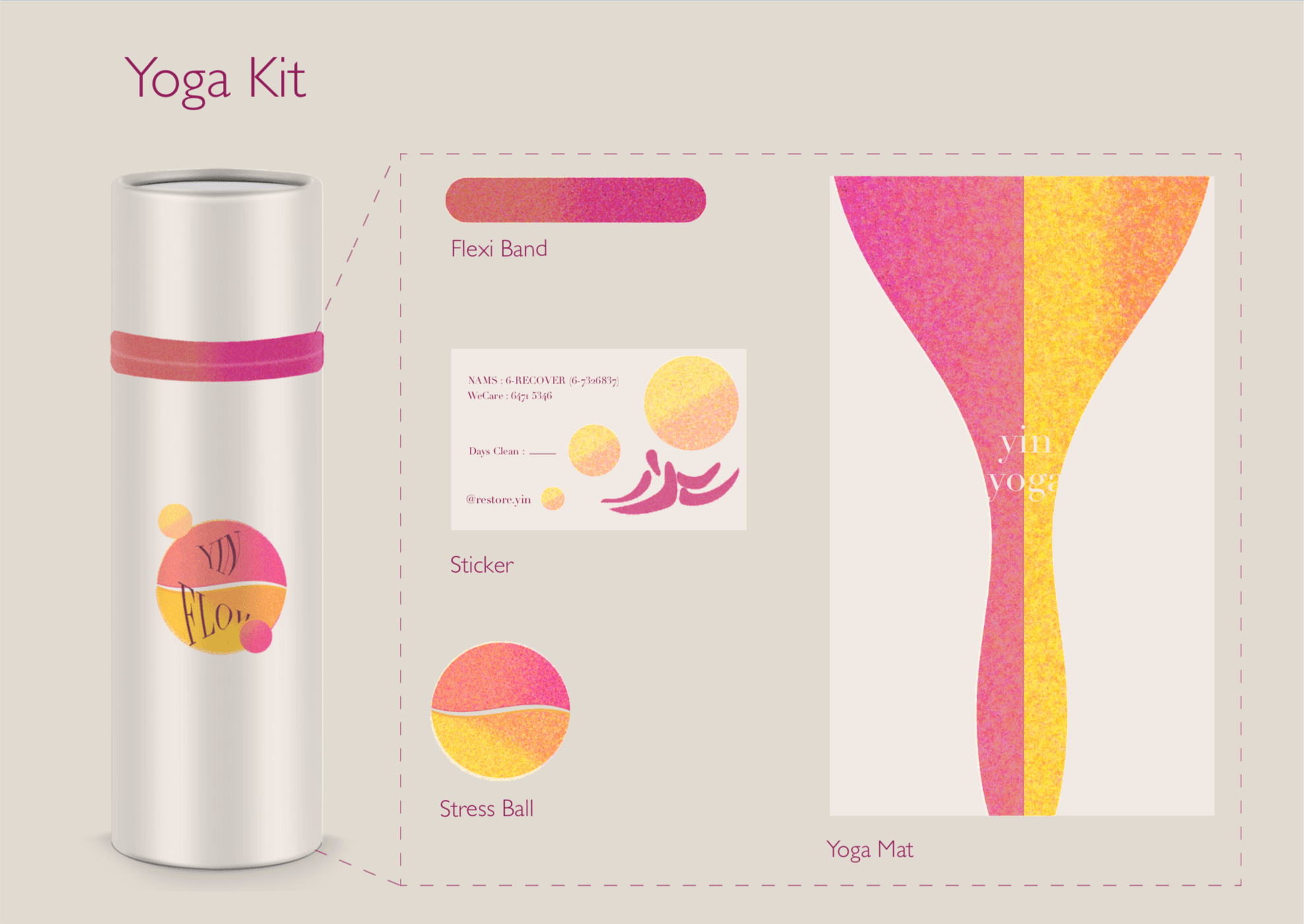
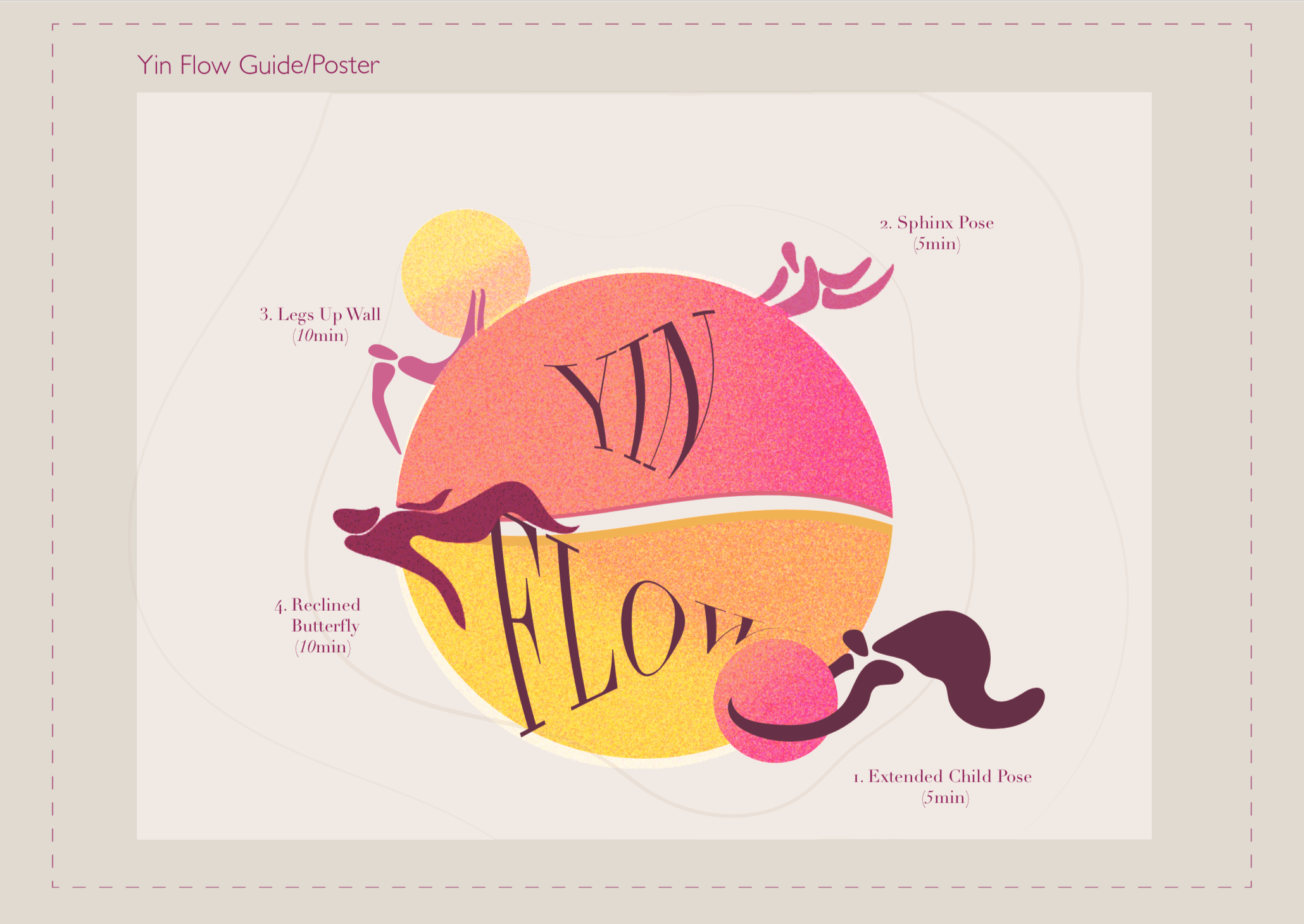
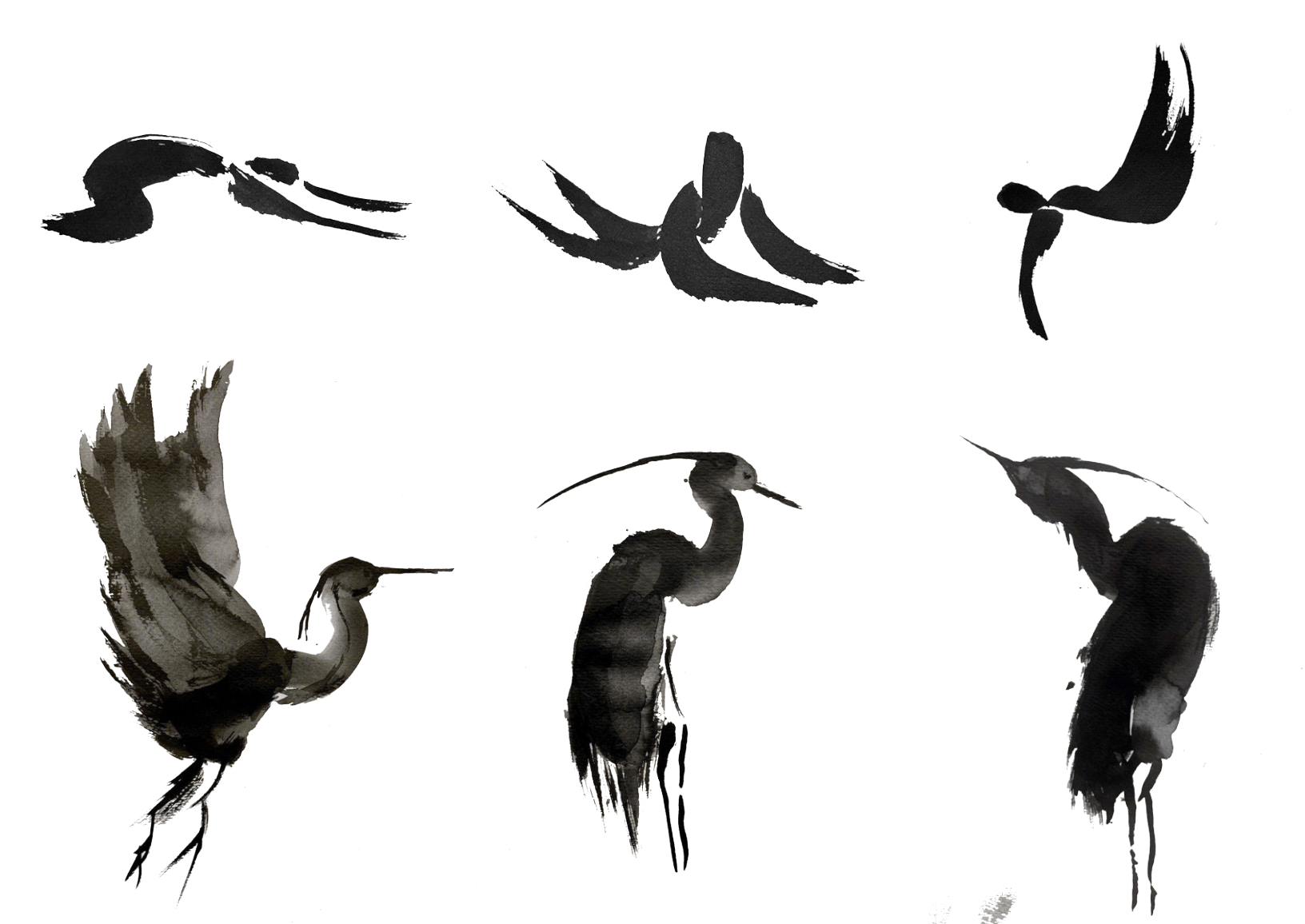

The Chinese brushstrokes juxtaposed against the vector designs were too jarring and I decided to go ahead with vector illustrations instead to keep the aesthetic minimalistic.
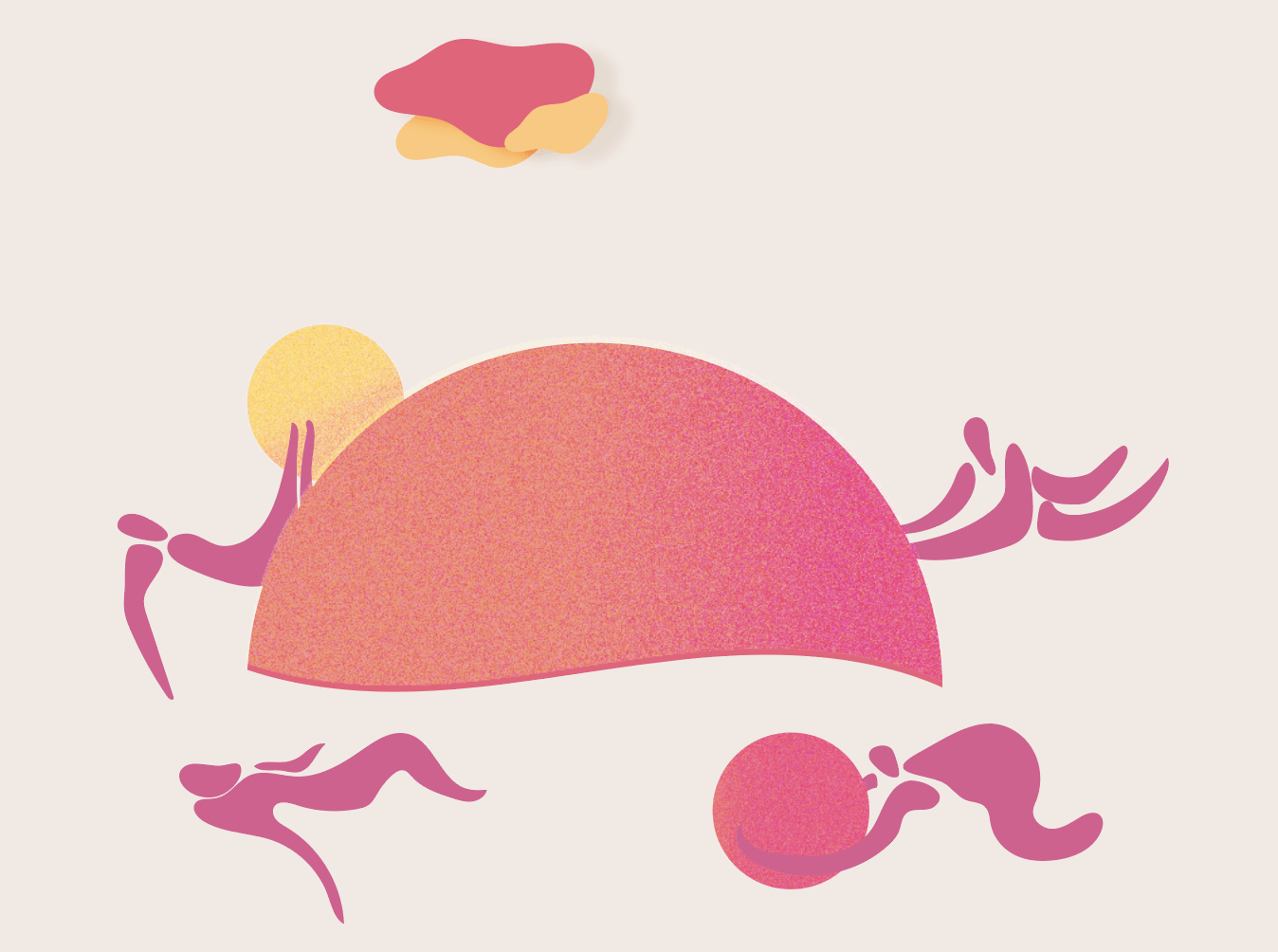


For my research I decided to interview recovering addicts/addicts anonymously to better understand the nuances of substance abuse disorder. I have included responses from three of the few people I have interviewed. The rest were more sensitive and I will keep their responses for when I explore this work further in the future.
1)What does Addiction mean to you? What image comes to your mind when you hear the word?
2)How has your idea of it changed from when you were younger?
3)What were you addicted to? And for how long?
4)Have you been sober? If yes, for how long and if no how long since u last were clean?
5)How young were you when you started and describe your first ‘encounter’
6)Have you ever thought about why you started?
7)When you were abusing, did you talk to anyone about it? If yes who? And if no why?
8)How is addiction generally perceived in Singapore?
9)Could someone have done something that would have helped you want to quit?
10)Are you aware of the avenues for help available?
11)Since you first tried being clean, what made you relapse?
12)What was the hardest part about staying clean?
13)Do you think it is easy to integrate back into society and normalcy with the label ‘ex addict’?
14)What would you want to say to people who stigmatise addiction? And who refuse to recognise it as a legitimate illness?
15)What can normal people do to help struggling addicts cope and stay clean?
16)What can family/friends do?
17)On you road to recovery, how do you motivate urself? What kind of follow up helped you keep going?
18)When you were recovering, what kind of triggers would you avoid to avoid relapsing?
19)What colour calms you?
20)What initiatives can be implemented to help ex addicts stay clean?
C:
1) when it affects daily functioning
2) i used to think addicts were low func, but u can b a high func addict
3) benzodiazepines/opiates/opioids, mostly benzodiazepines
4) recreational use now, def miss the high, don’t miss the memory loss
5) 21 when i was hanging out w ppl i wasn’t close to because i was vulnerable lmao
6) i was sad and trying to fill a void
7) yea talked to a friend of mine who didn’t judge me and came up with a taper plan for me but he died shortly after and i think i relapsed even harder
8) idk this lol
9) nah no way, it’s gotta come from within, it’s a very intrinsic process, no one can help u except urself
10) ya therapy helps, but at the end of the day, it’s finding intrinsic purpose
11) lack of purpose; when being high was the sole purpose and having that purpose was better than having no purpose at all
13) if society weren’t so ‘dickish’, the public needs civic education
14) GET FKED AND GET WOKE
15) constant social support, keep checking in on em
16) be supportive, see it as a test of the human spirit for both themselves and addict, they should put self-care first but not blame the addict for causing them distress (@MUM I SEE U)
17) the idea of productivity pushes me to strive n thrive
18) didn’t rly avoid, stems from willpower
19) forest green
20) self-help programmes/self-improvement programmes, idk cooking class or sum lol
F:
1) being reliant on a substance and experiencing w/d or disrupts daily life without it
2) before i was able to admit i had a problem and do something about it through recovery, i had just as many misconceptions about who a drug addict could be. and i used those misconceptions – that stigma – that society puts on drug addicts and alcoholics, as a form of self-protection. i wasn’t homeless, sleeping on the streets. i wasn’t filthy, wearing ragged clothes smeared with grease, food and blood, digging through dumpsters for a meal. i told myself those things to deny that i had a problem. as long as i wasn’t like that – as long as there were people out there worse off than me – then i couldn’t be an addict. but i was wrong.
3) tramadol and heroin. former for 4 years and the latter on and off
4) –
5)i was 17 when i first experimented with drugs recreationally and perhaps 18 when i tried tramadol for the first time. my ex bf had a bunch of them from the doctor and he just told me they could be abused for a high so i took them. i didn’t know what to expect. it didn’t hit me like a truck or produced a significant high like some drugs do so i was confused. i thought i wasn’t feeling anything until i laid on my bed and closed my eyes. it just felt warm and fuzzy and in that moment i remember feeling as if nothing in the world mattered. it was slightly euphoric but i still could function “normally”.
6) yup
7) i only talked about it to my friends who also were abusing it.
8) i feel that there’s definitely a stigma attached to it. if you’re an addict you’re a junkie and everything else you do doesn’t matter. you’re just reduced to that- a junkie.
9) –
10) kinda
11) i couldn’t stand being sober. i mean, why be sober when i can pop a few pills and take a few hits and feel better? it helps me sleep better anyway
12) withdrawals aside, triggers and getting bored
13) no. that’s partly why i refuse to avenues like NA and i do my best to look the exact opposite because i don’t want to be labeled or associated with it especially to people who don’t know me/don’t know me well enough.
14) the first step to recovery is recognising that that is a problem
15)-
16)-
17)-
18) i’d keep all my paraphernalia out of sight but sometimes i have a bastard friend who would shove them in my face and think it’s funny
19)-
20)-
J:
1)Addiction is a habit that you know it not good for your well being but it’s so good to have to cover whatever things or pain that I’m going through.
2)When I was younger, I thought addiction is just for people with mental illness, but when I grow older I realise addiction can cause in Many ways and can be for anyone.
3)Im addicted to excessive alcohol drinking. It about 3-4 years and I’m still struggling.
4)Yes, about 2-3 months, And suddenly get hook onto it again.
5)My first encounter was my 20th birthday. Where i start to drink excessive without stopping till I’m drunk and wasted.
6)Due to stress financially and also the pressure that my family gave to me. My Low Self esteem when it was an issue when I was in my primary and secondary days.
7)No, as I don’t think anybody understand. When I try to voice out to my friends, the thought I was joking and I love to be like that.
8)For me I felt Singapore perceive addiction as a mental illness
9)Hmm not sure, but for me I felt that at the point of time I just need people to be there and be around me.
10)Nope
11)When stress kicks in and triggered I will be easily relapse back to my addiction.
12)-
13)Hmmm not easy as people will still mark you as an addict, like how my family see me as a alcohol addict. You are being mark.
14)Don’t judge by the comment or the addiction that the person have. Dig deep and understand the problem that the person going through.
15)Being a support to the person that has the addict. And being there and go through with the person of recovery.
16)Being a support. Being there when the person need. Don’t ignore when they voice up.
17)As of now keep my whole day occupied.
18)Getting myself occupied with activity such as workout, hang out with friends to bring away negative thoughts.
19)Blue and white
20)I’m not sure. Just be there and support them throughout. Check out on them on and off.
Ong Kian Peng’s Lecture titled ‘Automated Utopia’ explores the possibility of attaining Utopia with the progression and advancement of AI into self sustaining entities. It is important to acknowledge that ‘Utopia’ the term in itself is an imagined island of perfection (one that is somewhat inherently unattainable), however we are presented with the possibility due to Automatism brought on by AI, a contemporary concept that was not know of before.
Is AI then able to manifest Utopian Concept due to its ‘objectivity’ and lack of ‘human biases and desires. whom Lyman Tower Argent attributes to being the reason why ‘Utopia’s nature is contradictory and cannot be satisfied’.
Will AI’s automation introduce a sense of unprecedented homogeneity not capable before due to human emotions?
Will AI be able to express homogenous ‘emotions’ or ‘perceptions’ that are expressive yet binary enough to be ‘processed’ usefully with tangible outcomes?
On the other hand, pop culture has always portrayed AI’s increasing presence and dominance as Dystopian rather than Utopian – I Robot, Terminator etc. However in reality this depends if our concept of Utopian Citizens only consist of humans or do we now expand to include Robots and Tech as valid co-habitants. Pop Culture more often than not, tends to show a conflicting relationship between Humans and AI. In reality, our relationship with tech is increasingly salient and symbiotic. Maybe the first step to attaining possible Utopia is to accept this coexistence and work towards nuancing this complex relationship rather than perceiving it as contentious or as a threat to our survival (it is this innate survival instinct in itself than hinders Humans from fully embracing AI) — we mostly crave advancements in technology and AI systems because they complement our needs and supplement our human activities. Alexa, Google Home etc. They are subservient to us and are always ready at our disposal.
Hence, the idea of full Automatism is treated as a taboo as it undermines our long established dominance in this world. The possibility that another entity/being as intelligent or perhaps even more intelligent than us, destabilises our hold. Most of us ultimately still want them to ‘think’ within our control and only operate within the parameters we set for them. It is important though, to accept that moving forward, such resistance will not amount to further progress in tech. Part of wanting to attain Utopia is to accept that we have to let go of this and instead allow AI to take its rightful place in our contemporary ‘biosphere’ which has grown to include not just organic habitants but digital cyborgs.
With these overarching concepts, dilemma I will attempt to address some of the questions put forth by Ong Kian Peng in his slides :
1. So how can AI present a different world than that of the cyberpunk genre and give us a technological utopian society?
2.What value does it add ? And what do we lose as a result of automation?
AI in itself opens up the space for an alternate/virtual reality to exist. It diminishes the notion that there is only one physical reality or truth and instead introduces multiple possibilities not bound or restricted by the classical laws that govern the physical world. In our conventional world, truths tend to be more absolute — our lives are finite , we only have one outward appearance , we are bound conventionally by law to have a committed relationship to only one partner for life. In other words we are tethered by our physical bodies and limited by society’s constructed rules. Yes, we do break away from these rules however the moment we do, we become disillusioned and often become existential as we feel ‘guilty’ for transgressing. These rules hence dictate absolute truths which we have grown to accept.
However AI and VR allow us to adopt virtual personas in virtual spaces where we can manifest even the darkest of our fantasies and feel normal. We are increasingly less conscious of the satisfaction we derive from some of this fantasies due to how nuanced and normalised it has become. For example the notion of Sex — it allows us to have more than one sexual partner (via VR Platforms) and not feel guilty for doing so.
— https://www.psycom.net/is-virtual-reality-sex-considered-cheating/
To push it even further we can decode how games like Animal Crossing where we adopt Animal Avatars and interact with one another, almost touch on the unspoken taboo of bestiality. Freud describes bestiality as examples of people fulfilling their desires insufficiently because of a lack of available options. Though this is a very crude and possibly debatable link, on a very subtle level it does act as a form of liberation from the repression of the ‘real’ world.
Essentially AI and Tech add a whole dimension of possibilities. Another example would be Alexandra Daisy Ginsberg’s ‘The Substitute’. This work is a video of an AI constructed Rhino (the last white rhino) aft it passed. In our reality it’s death is absolute and we have no way of breathing life back into it. However AI has intelligently constructed a virtual model of the Rhino by deep—learning its characteristics as accurately as possible. The Rhino is resurrected and paradoxically is immortalised as a digital entity. This could be done for species on the brink of extinction so that we do not permanently lose them. Death is inevitable and so is organic degradation and decay. However these same laws don’t apply to the virtual realm and hence AI allows us to to in a way preserve the perishable. This possibility then begs humanity to re-consider the idea of death as an end.
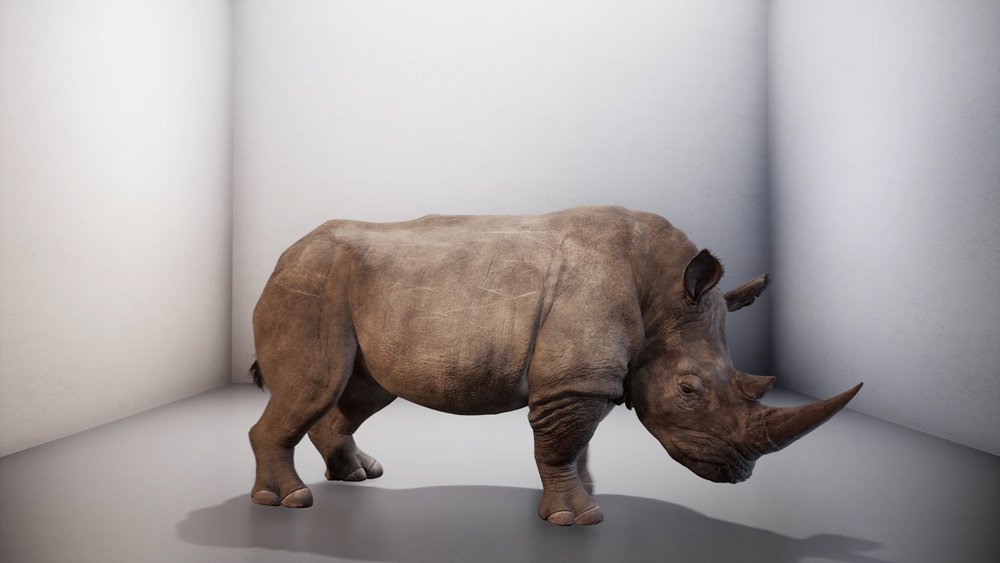
AI then offers us the possibility of a tangible after-life that can be seen , heard etc and not one of the Bible or Holy Books which are more or less imagined. We will be able to cope with death better, knowing that death won’t be an end it itself. On a more mortal and emotional level it adds some sort of stability and assurance. We mostly fear death because of the uncertainty we face having to abruptly leave this world with unsaid things or having to be separated from our loved ones. However AI in this context shown in the example, enables us to still ‘exist’ and interact with our loved ones, in the physical world, long after we are gone. It shifts us from one dimensional absolutes to multi-dimensional fluidity.
automation will result in many jobs becoming obsolete. Presently many jobs including vehicles which require drivers are becoming driverless. Waiters too are being replaced by Robots who have no ‘limit’ to the amount of productivity they can uphold. Jobs that rely on skills which can be easily translated into an AI System are becoming increasingly dispensable. Furthermore they do not have to paid/fed/replaced and are more likely to be efficient. More importantly we have to keep in mind the many strata of society. People of lower education with such skills will be at highest risk of being replaced. Being unemployed takes away their source of income and purpose. One could argue from a Darwinian POV that society in itself is a survival of the fittest and with technology becoming ever more dominant, it is those that are able to coexist with it that will sustain themselves while those not skilful’ enough will simply be ‘left out’.
We risk losing agency. Automation implies that humans are no longer needed as an intermediary for AI bodies to function basically. However we can determine how much control we want to give up by setting up restrictions to the automated process before it is set into motion. This is assuming that AI does not have the capability to grow its cerebral capacity independently. However, If we were to treat AI Systems as executors of human input, limited by what we feed it, instead of self sustaining entities, we will only be adopting a regressive and insular view. AI in its core, is self sustaining and automatic. We thus have to embrace full automation due to its inevitability.
What we risk losing in this process of trying to reconcile with AI systems is our sense of identity and self. Up till now it is our ‘human’ sensitivity and ‘spirit’ that distinguishes as ‘higher beings’. It is this poetic, mythical, intangible ‘essence’ and its uniqueness to each of our minds that provide us with our personal identity. We hence emphasise on the idea of the ‘journey’ and the ‘experience’ to fulfil this aspect of being human, regardless of the final tangible outcome or task. Despite the task being the ‘end goal that produces a tangible benefit for ourselves and society, it is the means through which we attain it that defines our ‘purpose’.
With full automation, a highly intelligent AI system would be able to short circuit this process and complete the task without any ‘interference’ of emotion. It’s sole nature is its ability to perform with cognitive ability to solve complex issues. However it is devoid of any ‘spirit’ — something that we are yet to be able to replicate, if we wanted to in the first place that is. Hence when we are forced to co exist with these AI systems which are able to attain outcomes way faster than us, it will definitely undermine the validity of our humaneness. We not only risk losing our sense of self due to this suppression but risk losing our sanity trying to navigate our minds out of this sudden existential state.
Will we step back and let AI do all the work? Will we able to simply ‘enjoy’ and stop working? Will capitalist structures built on social classes disintegrate with all forms of work being automated? How then do we allocate wealth and resources? What happens to meritocracy if AI takes over the whole process?
Our overarching role would be to integrate AI into our daily lives. Instead of resisting or obsessing over keeping AI ‘in check’, which would result in possibly dystopian consequences. We already use systems such as SIRI and Alexa almost daily. We use GPS and deep-learning systems to speed up and execute processes impossible to humans. However these processes are mostly still mechanical ones. We have to anticipate for when AI are able to automate ecological and advanced processes.
As much as I believe we should embrace this direction towards full automation, we have to be very sensitive and aware of the complexity of it. A highly intelligent being lacking moral perception could be disastrous if not trained properly. Though it is impossible to replicate our emotional capability and translate it into AI Systems, it is possible to feed these systems with scenarios and outcomes to train them to react accordingly. This then requires us to be unbiased and objective in what we prescribe the system while it is deep-learning. Presently many biases already exist — racial profiling etc where marginalised groups are targeted in systems such as face detection. As systems become more prevalent and powerful, such biases could have very fatal and dystopian outcomes. We do not clearly know how AI will respond to such non-objectivity as their cognitive capabilities expand. Hence it is important that humans working closely with AI, imbue it with as much impartiality and objectivity as possible.
In the book ‘Digital Currents, Art in the Electronic Age’, Margot Lovejoy brings us through the history and evolution of Art in light of the coming of the digital age. My personal insights and opinions will be in reaction to the Sub Chapters: the most advanced form of interactivity is hypermedia : virtual reality and ‘Digital Simulation‘ — the sections in which Lovejoy attempts to decode the relevance and complexity the realm of ‘Alternate Reality’ has in this digital era and also the consequential struggle artists face, having to reconcile the similar yet innately polarising spaces of reality and virtuality.
2. On Simulation (Personal Thoughts)
After reading the section of Digital Simulation, listed below were the initial concepts I pondered about to myself:
When does a representation of Reality became Virtual or Hyper Real ?
With the idea of a single physical reality being diminished in the contemporary digital age, is Virtual Reality still considered an ‘artifice’ or has it earned its right beside ‘Physical Reality’ as an established ideal?
On the importance of Hardware and how it paradoxically enhances the ‘non -physical, virtual experience’?
What makes an effective design of a virtual space?
When we think about Simulation, we are often aware that it is not ‘real’ or that it exists as some sort of imagined virtual entity modelled after elements rooted in our physical world. It is almost impossible to imagine or create a completely virtual space from ‘scratch’ — one that has no recognisability visually or cognitively. It is this ‘human handicap’ that inevitably and inextricably tethers Virtuality to Reality. Virtuality in itself hence often acts as mirror, extension, modification or re-interpretation of Reality. One could even argue that a successful Virtual Space (artwork) has to reflect at least fundamental elements of reality in order to engage with the viewer.
For example, in Peter Weibel’s ‘The Wall’ which Lovejoy discusses, a simulacrum is projected onto a large screen (a digital image of a wall), as the viewer walks past the screen, a camera captures his/her silhouette and warps the projected wall. As the viewer moves, the wall further distorts relative to his/her movement. The viewer then becomes part of what is being viewed in real time. Titled ‘The Wall, The Curtain (Boundary, which), also Lascaux’ the work then becomes a modern metaphor of a ‘digital cave’ with the walls being the projection of the brick wall and the drawings being the ‘silhouette’ distortions. Here we can see how the artist has made a link to a pre existing real notion (Lascaux Caves) within his virtual space. Hence when we interact with the piece, we are intuitively coerced into making the interaction more profound.
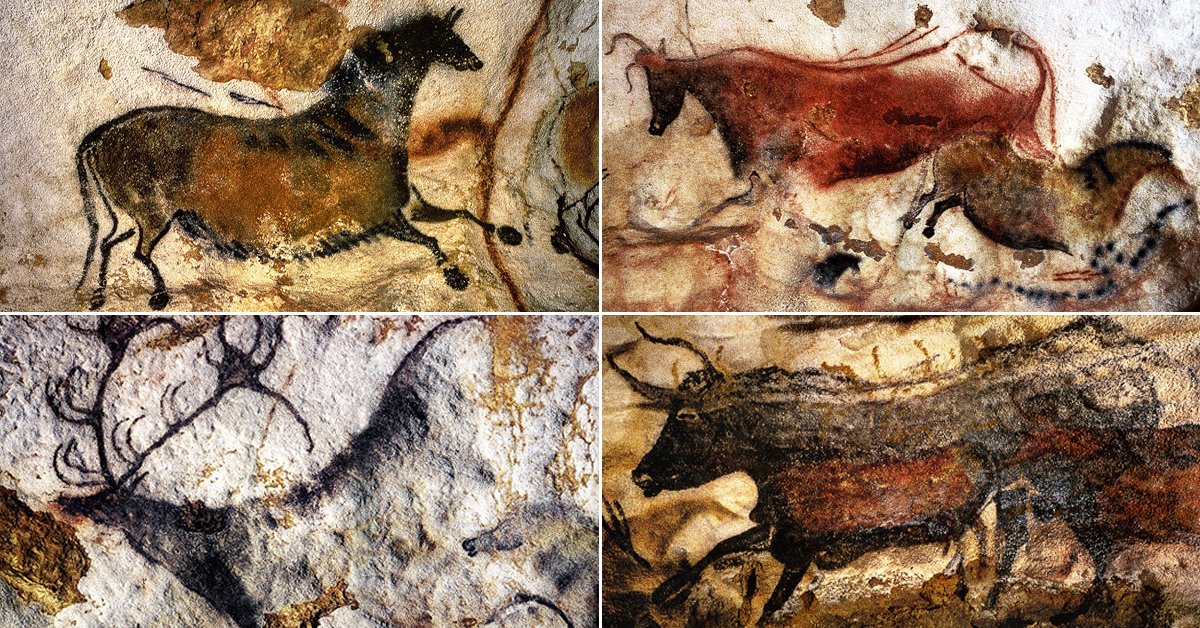 Lascaux Caves
Lascaux Caves
 .
. 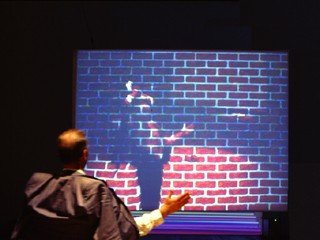
Weibel’s “The Wall” also explores the butterfly effect, based on Aristotle’s philosophy that we are all observers in a realistic and objective model of the world we inhabit. Weibel exaggerates and portrays this effect by allowing us to directly manipulate our present space. The virtual curtain acts as a non -discrete, mouldable extension to our immediate physical surrounding.
In essence, virtuality has no physical mass or matter. It is purely ‘visual’ or ‘aural’. It is the morphing of pre-existing cognitive notions we have that manipulates us into recognising it as ‘hyperreal’. The photograph of an image is not real. However it is not virtual as the level of transcendence between the two realms is zero. Compare this to what might be a projection of an image on water. The way the light inconsistently projects or refracts around the ripples of waves of water before it, distorts the image into a more obscure entity or rather the image of the image plays with our senses, resulting a high level of transcendence into virtuality. We can hence see how easy it is to cross over from reality to virtuality.
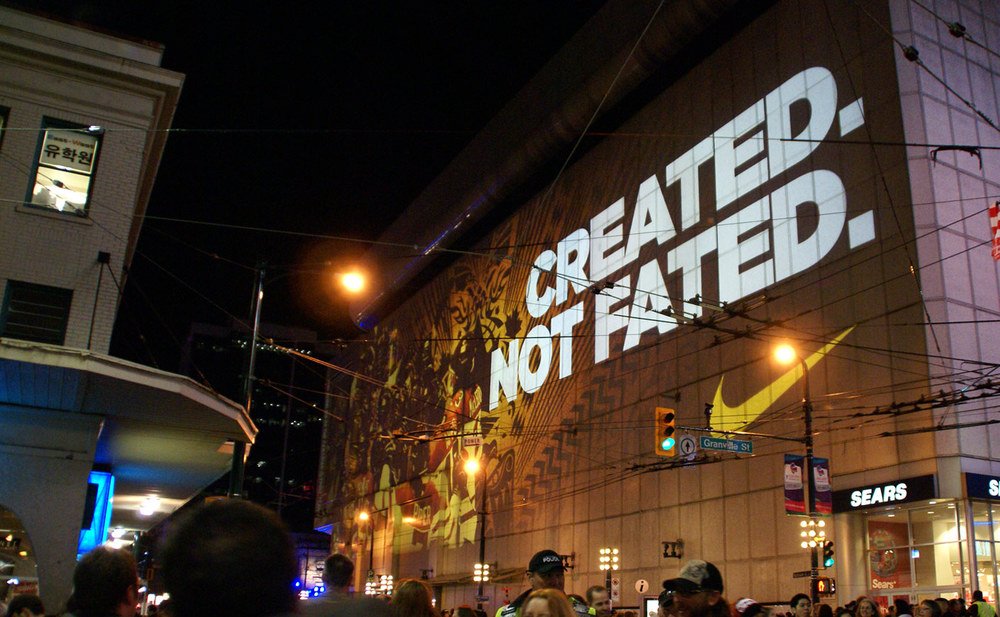 Nike Ad Projected on Flat Surface
Nike Ad Projected on Flat Surface
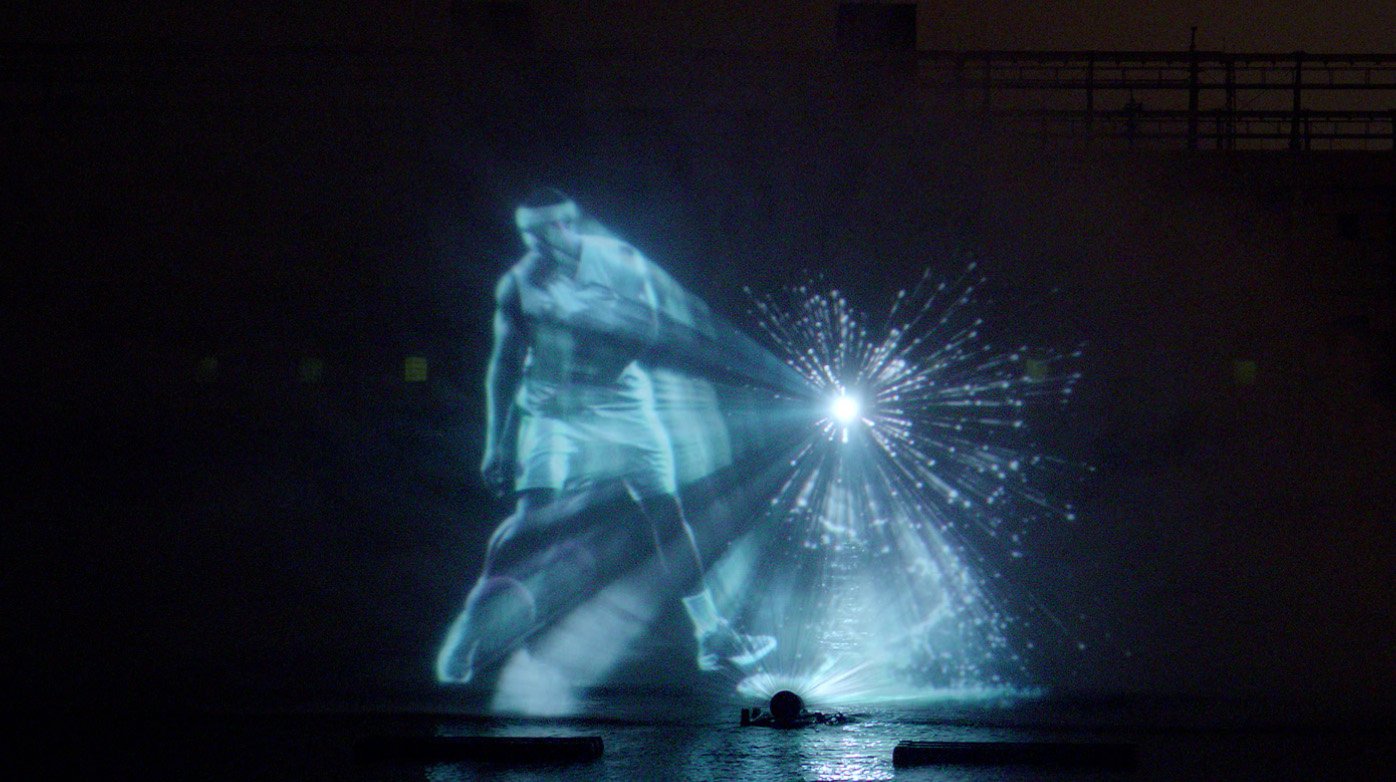 Nike Ad Projected on Water Surface
Nike Ad Projected on Water Surface
However, we live in a highly complex contemporary digital age presently. It is one where the idea or rationale behind a sole true reality has diminished. Instead we acknowledge the existence of multi-realities within realities, some existing as dimensions of the other. With the advent of technology and social media for example, our social media persona or profile has its own unique reality separate from our real self. There is also heightened interactivity between these seemingly separate entities, enabling them to coexist and react to each other. As such, no one defined reality has influence over us . This phenomena then leads us to the notion of ‘hyperreality. A ‘new’ reality that is not based on physical rationale but rather, commands, algorithms and obscure intangible ‘digital building blocks’. It is no longer ‘imagined’ since it has no tether to any logical reasoning. Instead it is a spontaneous culmination of ‘miniaturised units, from matrices, memory banks, and command models’.
(Classical Physics) Reality – Virtuality – Hyperreality (Quantum Physics)
If we were to draw parallel to physics, hyper reality would be the quantum realm — contained within our observable physical world, yet completely different in the way it defies the laws that bound conventional matter. For example in quantum theory, a particle’s past state can be predicted from its future state. Consequently, Schrodinger’s Cat, Relativity and other quantum concepts suggest the possibility of time travel which is yet to be achieved in the realm of classical physics. The quantum particles, dark matter etc are similar to the building blocks of matrixes and commands, which operate the ‘hyperreal’. They exist on the same plane as their neighbouring entities but are subsets in the way they interact and are ‘lawless’.
Lovejoy also mentions that hypermedia is the ‘most advanced form of interactivity’. Artists working with VR, are increasingly creating 3D, immersive landscapes which allow people to explore them via some sort of extension or intermediary gear. Computer monitoring tracks their every movement (depending on the sensors connected to their physical gear) enhancing the veracity of the interaction. It is important to note then, that virtuality is very deeply rooted in tangible hardware; it is not simply a detached, imagined space we can freely delve into. To experience or ‘enter’ the realm of virtuality, our body needs to ‘synthesise’ with specially developed gloves, tracking suit, VR Gear etc. We essentially need to come into physical contact with ‘machine’ for us to transcend into these obscure alternate realities. On a psychological level, the act of momentarily (for the duration of the interaction) ‘modifying’ our body into semi cyborgs, invokes a sense of disassociation from our physical body and reality. It ‘strips’ away any innate bias we have pre-interaction, and throws us in deep as clean slates. However, we still have our cognitive and emotional functions preserved, allowing us to then develop ‘new’ perceptions and opinions from our interaction with this unfamiliar virtual landscape.
Lovejoy discusses Artist Brenda Laurel who calls VR costumes ‘prostheses for the imagination’. In her work ‘Placeholder’, participants enter a dark cave where creatures which exist as petroglyphs, entice them to approach close. “On approaching each, the participants “become” the creature, assuming its physical features and experience spatialized distortion of their own voice through the HMD (head-mounted device) speakers.” This then allows us as the participants to fully disassociate from our bodies, adopt a completely different one and experience the creator’s virtual narrative. The process of navigating freely as a digital ‘sentinal’ being is overwhelming and euphoric. We have to take directions from the artist who ultimately has control over the virtual landscape through the boundaries they have set. Laurel’s ‘Placeholder’ hence is an example of Human – Machine – Human interactive system.

Placeholder : https://vimeo.com/27344103
With this in mind, we as creators have to acknowledge that we define the constraints and parameters of our intended virtual/alternate environment/space. Lovejoy describes how conceptualisation of VR spaces results in the dilemma of ‘freedom’ and ‘restrain’. She talks about VR artist Perry Hoberman who believes freedom of choices and a non discrete fluidity in the flow of interaction results in a more meaningful virtual experience.
“With interactivity, it’s better to have nothing to say than to try to say something. It’s better for meaning to come out of the interaction rather than controlling the experience.” — Hoberman
This idea of non-linearity and spontaneity can even be applied to a very simple Human-Machine-Human mode of interaction to see its affect. For example in Kazuhiko Hachiya’s ‘Inter Dis-Communication Machine’, two participants have their visual perspectives swapped. Hachiya talks about how the perceived real world is different for each person (hence, the users are essentially experiencing a simulation when their sight is replaced by the other). In this set-up, there were no restrictions or a prescribed set of options to confine or control the interaction. Hachiya even designed the machine to accommodate for the possibility of sexual intimacy between the participants. This then allowed the participants to process their virtual environment in any way they wanted and have that manifested physically (intentionally and unintentionally), in an organic and natural manner. It results in a more profound and impactful experience.
If as an Artist we were to instead limit possibilities, users will eventually be conscious of their lack of ability to affect their virtual environment the way they want to. They will be aware of the artist’s intervention to coerce an intended outcome, making the virtual space ‘less real’. We should always aim to make virtuality as convincing as possible as a legitimate entity capable of offering the same sensations reality offers us.
The above mentioned concepts are highly relevant to my group’s final project with involves simulated clocks and time. Our installation involves the layering of physical hands of the clock above projection of a clock. The intersection of hyperreality and reality intensifies the interactivity. The video itself is a simulacrum—with an added melting effect to reference Dali’s ‘The Persistence of Memory’ . By choosing a subtle yet powerful distortion, we will be able to simulate a virtual modern interpretation of Dali’s melting Clock. This will also effectively display a contention between the real and virtual which is relevant when we think about what ‘real’ time is as opposed to ‘perceived’ time. Technology has also affected our perception of time and this juxtaposition between a mechanical clock and a virtual one perpetuates a psychological and uncomfortable feeling when viewed by the participants.
The projections are a form of simulation as the speed of the ticking, depending on the users’ action will all occur at ‘unreal’ rates. We aim to create a convincing enough alternate space such that line between ‘mechanical’ time and the sped up ‘simulated time’ gets diminished the longer the length of interaction.
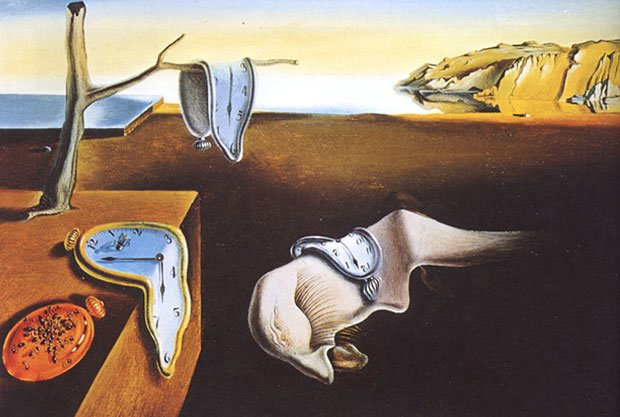 ‘The Persistence of Memory’ , 1931, Dali
‘The Persistence of Memory’ , 1931, Dali
http://tauzero.com/Brenda_Laurel/Placeholder/Placeholder.html
http://www.medienkunstnetz.de/works/die-wand-der-vorhang/